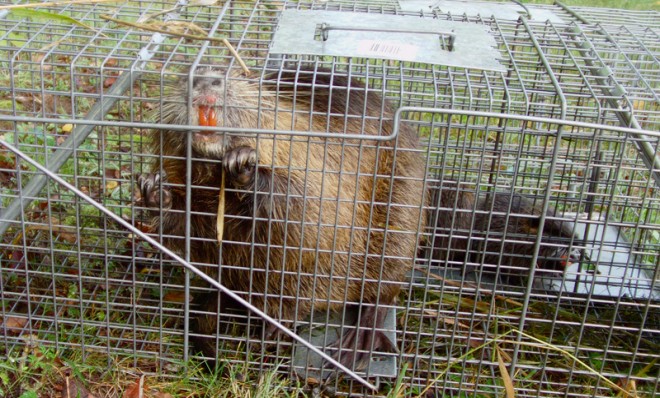The latest climate change horror: Massive swamp rats
It's the orange teeth that are really terrifying


Think your city has a rodent problem?
Then consider the nutria, a huge, "semiaquatic" rodent that looks like a cross between a beaver and a sewer rat, but with bright orange incisors. Also know as swamp rats, nutria on average weigh between 15 and 22 pounds; in the U.S., they typically reside in swamps in the deep South where they can always be near water.
That could all change soon, according to the United States Geological Survey, as a population boom and rising temperatures are spurring the varmints to venture farther from their natural habitat.
The Week
Escape your echo chamber. Get the facts behind the news, plus analysis from multiple perspectives.

Sign up for The Week's Free Newsletters
From our morning news briefing to a weekly Good News Newsletter, get the best of The Week delivered directly to your inbox.
From our morning news briefing to a weekly Good News Newsletter, get the best of The Week delivered directly to your inbox.
New research to be released soon from the USGS shows that nutria have migrated north in recent years during a period of unusually warm weather. If that trend continues, the USGS says, nutria could find suitable homes in almost every state within the next 40 years.
"In the year 2050 we show that almost all of the states are suitable for nutria," Catherine Jarnevich, a research ecologist with the USGS, tells The Daily Climate.
Originally found only in South America, nutria were introduced to the U.S. at the turn of the 20th century to bolster the fur trade. Yet as the market for animal pelts collapsed, and demand for swamp rat fur — yes, apparently there was such a thing — decreased, the nutria population quickly grew. High reproductive rates and a near total absence of natural predators — alligators are their only major threat — only fueled that rapid growth.
Left unchecked, nutria are now considered an invasive species in parts of the country. That's a problem, because the rodents have a voracious appetite, consuming roughly 25 percent of their body weight per day.
A free daily email with the biggest news stories of the day – and the best features from TheWeek.com
A decade ago, the USGS warned that the ballooning swamp rat population had "literally eaten up" some 100,000 acres of coastal Louisiana wetlands.
Thankfully, nutria eat mostly plants, meaning humans at least don't need to fear being attacked by any of these Rodents of Unusual Size.
Jon Terbush is an associate editor at TheWeek.com covering politics, sports, and other things he finds interesting. He has previously written for Talking Points Memo, Raw Story, and Business Insider.
-
 What Nick Fuentes and the Groypers want
What Nick Fuentes and the Groypers wantThe Explainer White supremacism has a new face in the US: a clean-cut 27-year-old with a vast social media following
-
 5 highly amusing cartoons about rising health insurance premiums
5 highly amusing cartoons about rising health insurance premiumsCartoon Artists take on the ACA, Christmas road hazards, and more
-
 Codeword: December 21, 2025
Codeword: December 21, 2025The daily codeword puzzle from The Week
